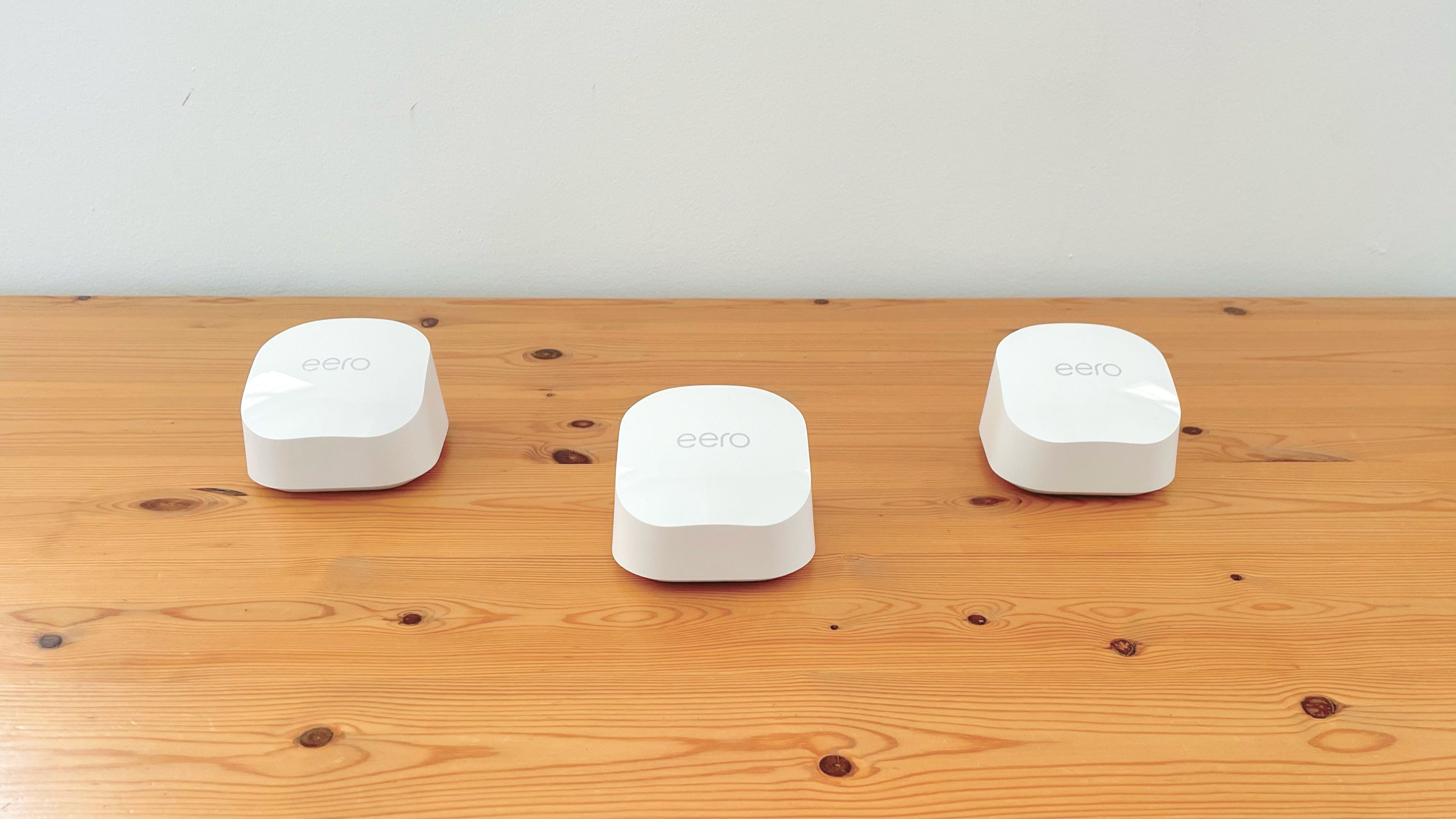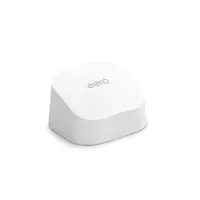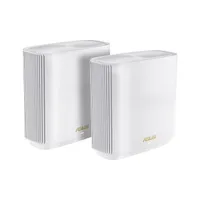TechRadar Verdict
It’s not exactly overflowing with additional features, and the need to pay a subscription fee to use Eero’s parental controls is disappointing. However, the Eero 6+ is competitively priced and provides a fast, reliable mesh networking system for larger homes that need to upgrade their Wi-Fi.
Pros
- +
Competitively priced
- +
Easy to use
- +
3.0Gbps Wi-Fi 6 performance
- +
Available with 1, 2 or 3 routers
Cons
- -
Limited features in the Eero app
- -
Parental controls require additional subscription
- -
Dual-band only
Why you can trust TechRadar
Eero 6+: Two-minute review
The original Eero 6 was the first Eero mesh Wi-Fi system to support Wi-Fi 6, and while it wasn’t particularly fast it did provide an affordable and easy-to-use upgrade for people who wanted to replace an older Wi-Fi 5 router. That was a couple of years ago, though, and the modest 1.8Gbps speed of the Eero 6 is looking a bit doddery now - especially when compared with newer models, such as the recently launched Eero Pro 6E that now supports the latest Wi-Fi 6E technology.
With that in mind, Eero - which is owned by Amazon - has just released the updated Eero 6+. This sticks with dual-band Wi-Fi 6, but its top speed of 3.0Gbps makes it almost twice as fast as its predecessor. It also includes new features, such as some additional Ethernet ports to provide wired network connections and support for the latest smart-home technologies.
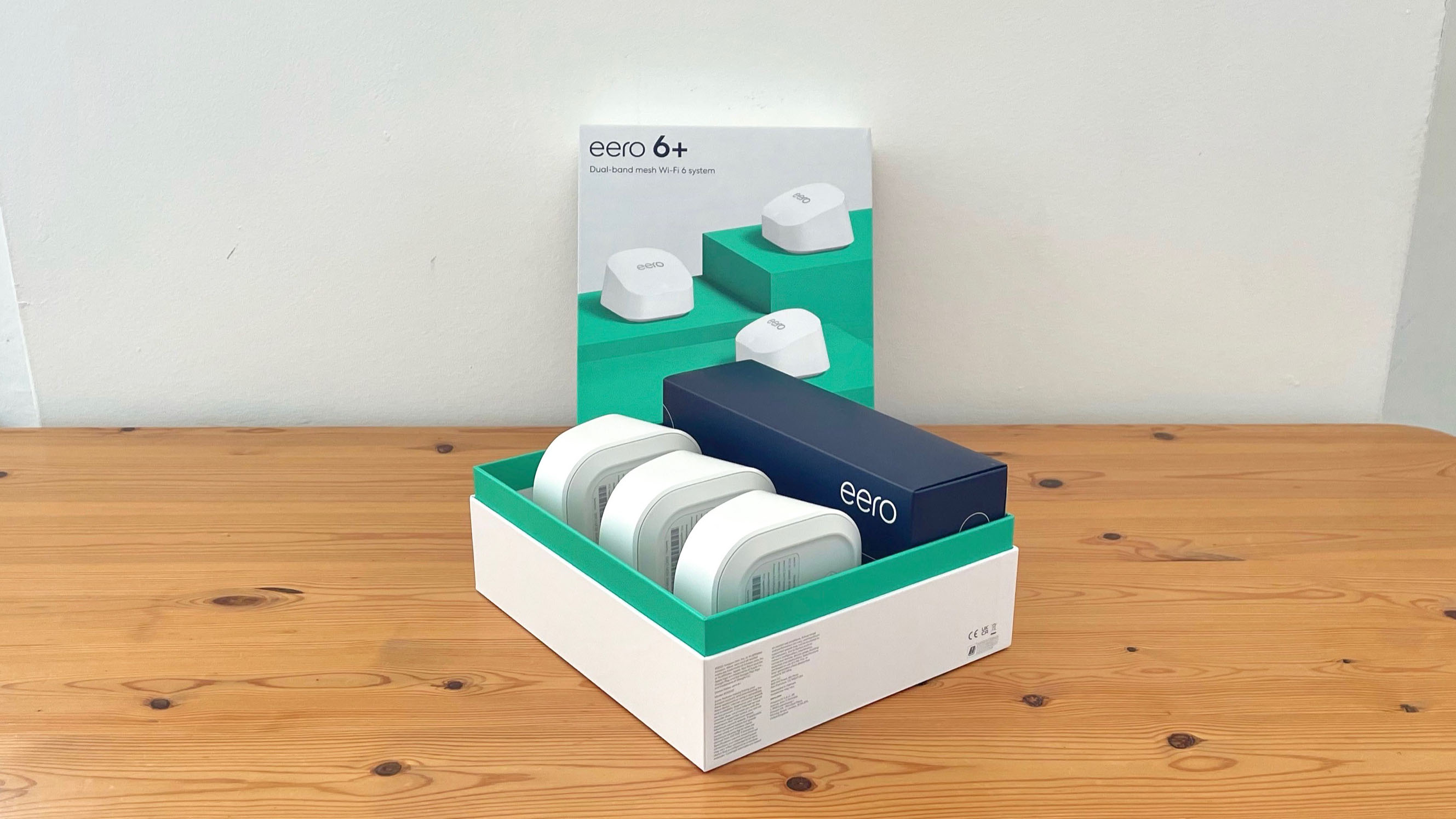
The Eero 6+ sticks with the now-familiar design used across the entire Eero range, with each of its three routers consisting of a compact, gleaming white pod that measures just 66mm high, 97mm wide and 99.4mm deep. They’re sturdily built, though, and that compact design makes it easy to place each router on any nearby table or shelf when you’re setting them up.
The original Eero 6 consisted of a primary router - called the ‘gateway’ - and two ‘extender’ units that needed to be set up in a particular order. However, the Eero 6+ simply includes three identical routers, which can be placed wherever you want during the initial set-up process (as long as one of the Eero routers is connected to your existing broadband modem or router).
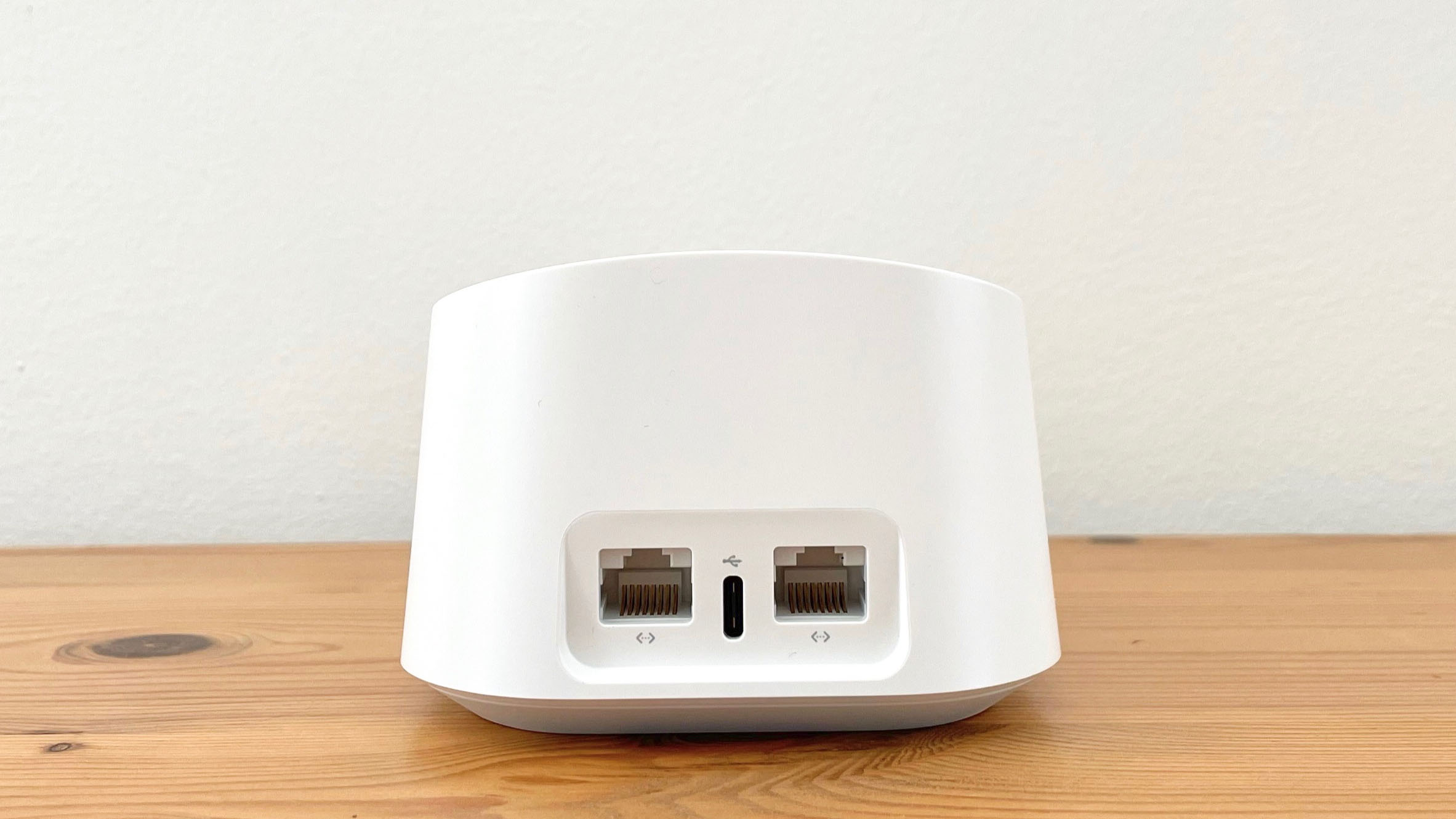
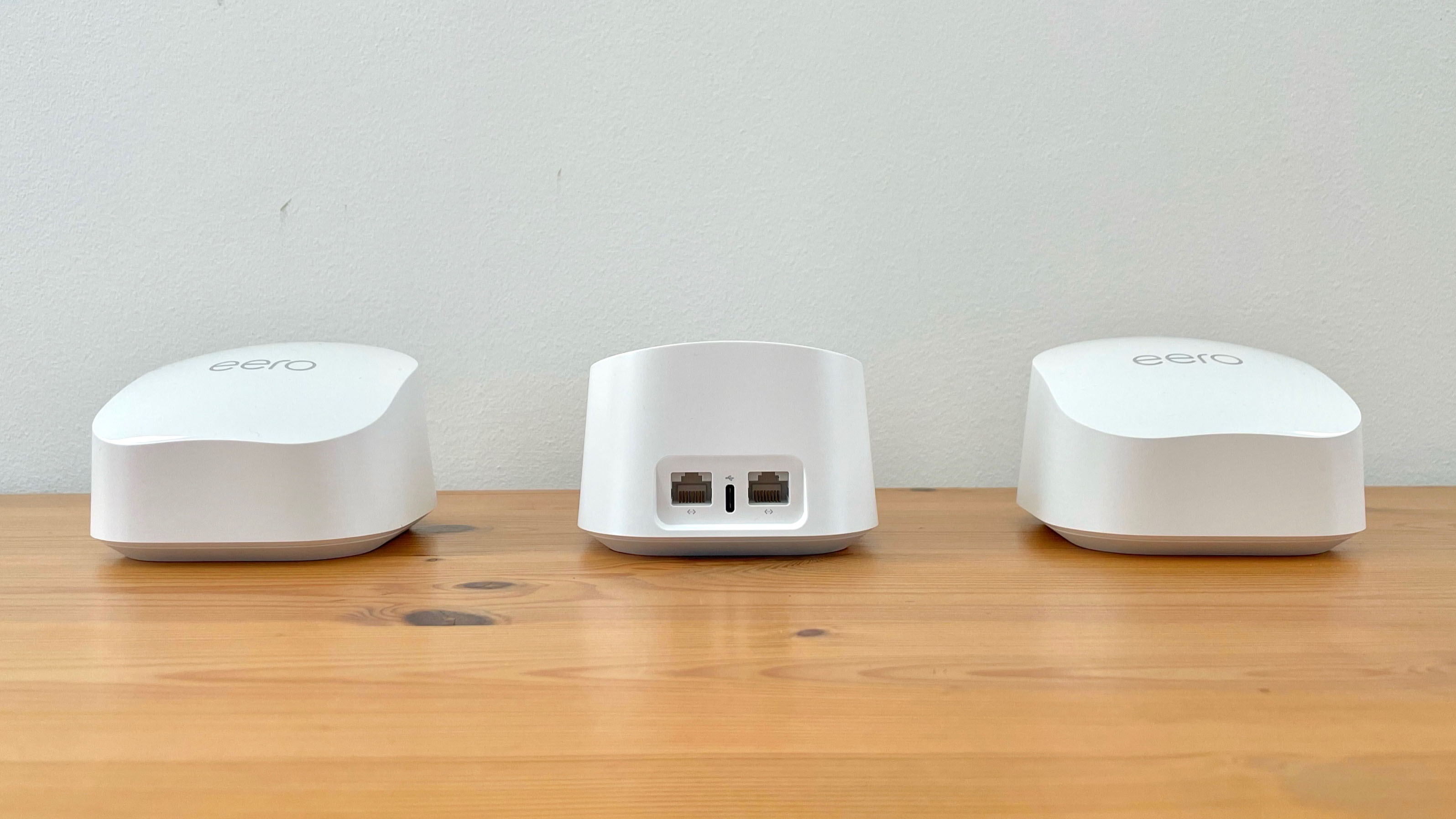
All three routers also include two Gigabit Ethernet ports so you have more options for providing wired connections for a gaming console, smart TV or other wired devices.
As mentioned, the Eero 6 is almost twice as fast as its predecessor - yet Amazon/Eero seems oddly reluctant to make any claims about its speed at all. The company bends over backwards to avoid mentioning the speed of the Eero 6+, saying only that it’s suitable for home broadband services with speeds of ‘up to one gigabit per second’ (Gbps). That’s not very helpful, as it’s referring to the speed of your existing Internet connection, rather than the speed of the Eero routers themselves. But, buried in the depths of the Eero website is a comparison table that gives the Eero 6+ a rating of ‘AX3000’ - which means Wi-Fi 6 (aka 802.11ax) running at 3000Mbps (3.0Gbps).
Along with the improved speed and the additional Ethernet ports, the Eero 6+ also provides support for Bluetooth Low Energy 5.0 and a new low-power wireless technology called Thread. It might not be a well-known name just yet, but Thread is being adopted by many new smart devices, such as lights and security sensors, so the Eero 6+ is well-equipped to work with the latest generation of smart home devices.
Sign up for breaking news, reviews, opinion, top tech deals, and more.
And, like all Eero devices, the Eero 6+ is very easy to set up and use. The Eero app for iOS and Android initially uses Bluetooth to connect to the Eero routers, and guides you through the process of setting up your new Wi-Fi network in just a few minutes. However, the simplicity of the Eero app does mean that it’s rather basic when compared to some of its rivals.
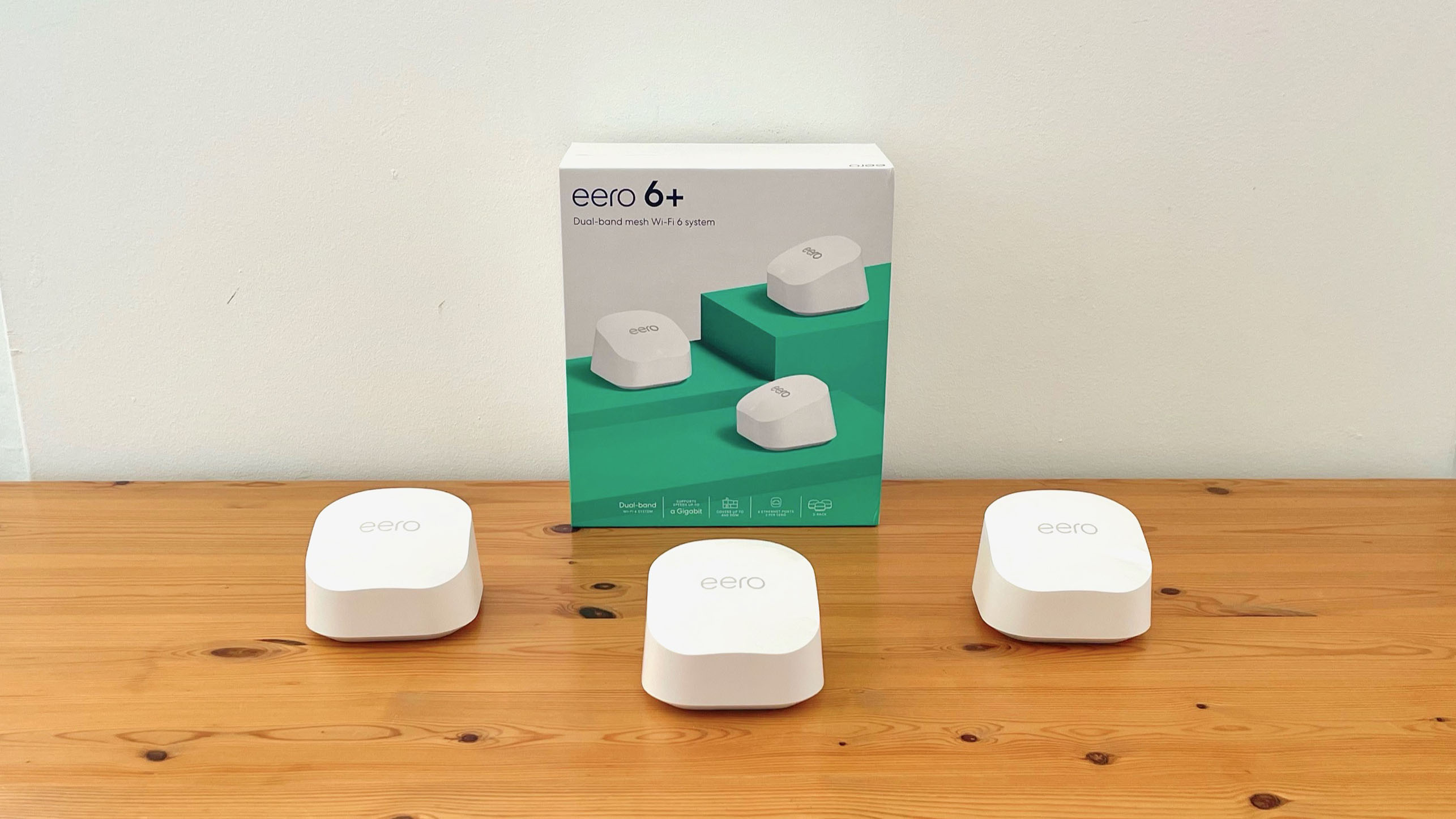
The Eero 6+ is a dual-band mesh system that can transmit data on the 2.4GHz and 5.0GHz frequency bands, but the Eero app simply merges those two bands into a single network and relies on the routers to automatically provide the fastest connection for your computers and mobile devices as they join the new network. That does keep things simple for home users who may not have too much network know-how, but more advanced users may prefer an app that provides greater detail and control when setting up their new network.
It’s not exactly overflowing with additional features either. You can create profiles for individual users - such as young children - but if you want content filters that can block unsuitable material and dodgy websites then you’ll have to sign up for the additional Eero Plus security service.
You do get a 30-day free trial for Eero Plus included with the Eero routers, but after that, you’ll need to pay £9.99/$9.99 per month, or £99.99/$99.99 annually to continue to use the service. It’s also frustrating to find that several other features, such as the ability to block online ads and certain applications, also prompt you to sign up for this subscription service too. There are rival routers that provide better parental controls without any additional charges, so parents of young children might want to shop around to see what’s available elsewhere.
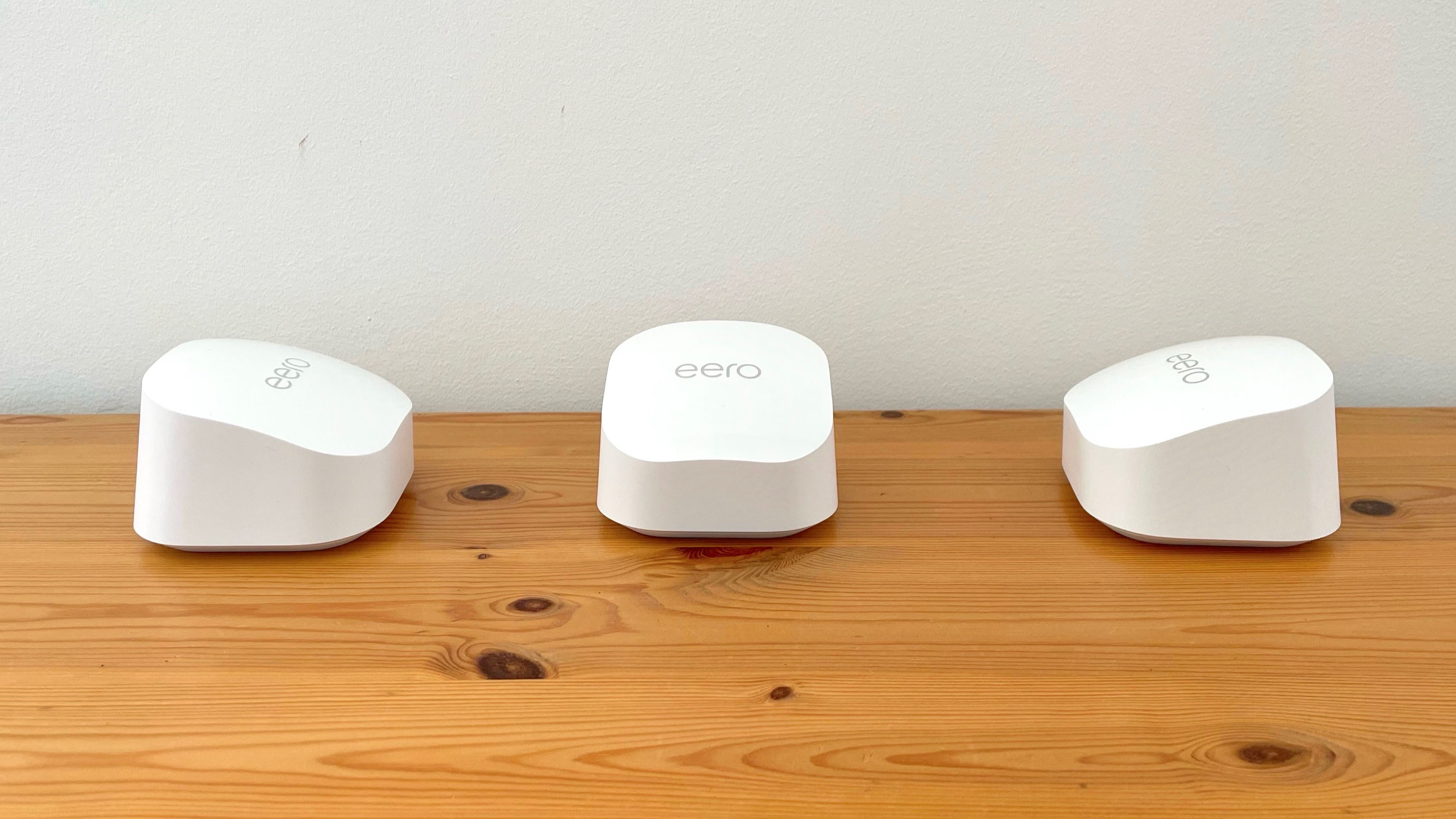
It may be a little light on features, but I didn’t have any complaints about the performance of the Eero 6+. As always, I test mesh systems such as this by setting them up with the first Eero router connected to my normal router (provided by my ISP) and then placing the second Eero router in an office at the back of the building that always suffers from poor Wi-Fi reception. The third Eero router was located - as advised by the Eero app - in a hallway that is roughly halfway between the other two routers.
As I expected, nearby devices in the same room as the first Eero router simply recorded their usual speeds of 150Mbps for the Ookla Speed Test and 19MB/s for Steam downloads, which are the maximum speeds supported by my office broadband connection. Those speeds did dip a little as I picked up my laptop and wandered along the hallway to the back office. However, it only took around 30 seconds for the Eero routers to adjust to the laptop’s new location and then I watched as the Wi-Fi speed smoothly climbed back up to top speed for both tests, reaching 150Mbps for Ookla and 19MB/s for Steam once more.
Eero 6+: Price & availability
- How much does it cost? From $139.99 / £139.99 / AU$249.99
- When is it available? Available now
- Where can you get it? Available in the US, UK, and Australia
It may not be the fastest Wi-Fi 6 mesh system we’ve seen, but the Eero 6+ is competitively priced - especially for larger homes that need the top-of-the-range three-pack system that we review here. That’s not the only option that’s available, though, as you can buy a single Eero 6+ router on its own for $139.99 / £139.99 / AU$249.99.
A single router can cover areas of up to 1,500 sq. ft which should be suitable for most homes with just one or two bedrooms. Customers in the US can also purchase a two-pack mesh system that covers 3,000 sq. ft for $239.99 - although that option doesn’t seem to be available outside the US at the moment.
The three-pack mesh system that we tested is designed for larger homes of up to 4,500 sq. ft and costs $399.99 / £299.99 / AU$599.99. That’s only slightly more expensive than the original Eero 6, which is still on sale, and only offers speeds of up to 1.8Gbps (and also looks virtually identical, so take care to choose the correct model).
If you want something faster then Asus’ ZenWiFi XT9 is more than twice as fast as the Eero 6+, with a top speed of 7.8Gbps. The XT9 is considerably more expensive, though, starting at $499.99 / £459.99 (about AU$750) for a two-piece mesh system.
- Value: 4 / 5
Eero 6+: Specs
Wi-Fi: | Dual-band Wi-Fi 6 (2.4GHz/5.0GHz), Bluetooth 5.0, Thread |
Speed: | 3.0Gbps |
Connectivity: | 2x Gigabit Ethernet (WAN/LAN) |
Processor: | Dual-core @ 1.0GHz |
Memory | 512MB |
Storage: | 4GB Flash |
Dimensions: | 66 x 97 x 99.4mm, 0.25kg |
Should you buy the Eero 6+?
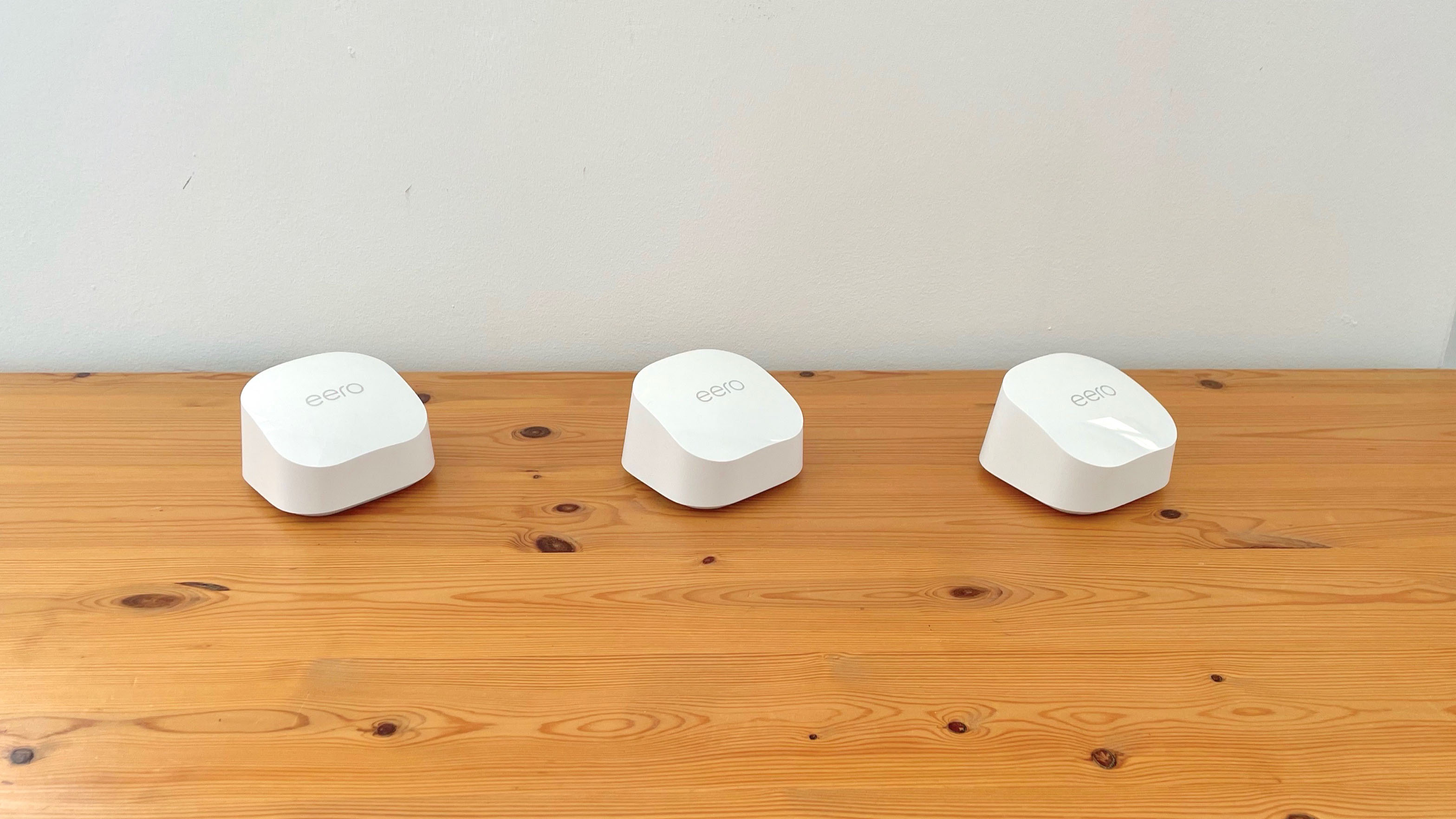
Value | It’s a shame that parental controls cost extra, but the Eero 6+ is good value for larger homes that require a wide-ranging mesh upgrade. | 4 / 5 |
Design | The compact design of the Eero routers looks smart and doesn’t take up too much space. The Eero app is also well-designed and easy to use. | 4 / 5 |
Performance | It’s only a mid-range mesh system by Wi-Fi 6 standards, but the Eero 6+ is more than fast enough for most home broadband services. | 4 / 5 |
Average rating | We don’t like having to pay extra for parental controls, but the Eero 6+ gets the basics right and provides fast, reliable Wi-Fi for larger homes at a competitive price. | 4 / 5 |
Buy it if...
You have lots of bedrooms
You can buy individual Eero 6+ routers for smaller homes, but the three-pack mesh system that we review here is very much designed for larger homes, up to 4,500sq.ft in size.
You want to future-proof your network
The Eero 6+ routers support a new wireless technology called Thread, which is designed to work with a new generation of smart devices, such as lights and security cameras.
Don't buy it if...
You're on a budget
The Eero 6+ is competitively priced, but there are still less expensive alternatives - especially for smaller homes - such as the original Eero 6 (which has just had a price cut).
You're a gamer
The Eero 6+ only provides mid-range, dual-band Wi-Fi 6. Gamers might prefer a tri-band router or mesh system that provides greater performance, or even a top-of-the-range system that uses Wi-Fi 6E.
Eero 6+: Also consider
| Header Cell - Column 0 | Eero 6+ | Eero 6 | Asus ZenWifi XT9 |
|---|---|---|---|
Price: | From $139.99 / £139.99 / AU$249.99 | From $129 / £139 / AU$229 | $499.99 / £459.99 |
Wi-Fi: | Dual-band Wi-Fi 6 (2.4GHz/5.0GHz), Bluetooth 5.0 | WiFi 6 (IEEE 802.11ax), dual-band 2.4GHz + 5GHz | Tri-band WiFi 6 (2.4GHz and 2x 5.0GHz) |
Speed: | 3.0Gbps | 500Mbps | 7.8Gbps |
Connectivity: | 2x Gigabit Ethernet (WAN/LAN) | 2x Gigabit Ethernet | 2.5Gb WAN, 3x Gigabit Ethernet; 1x USB 3.2 |
Processor: | Dual-core @ 1.0GHz | Quad-core, 1.2GHz | Quad-core,1.7GHz |
Memory: | 512MB | 512MB | 512MB |
Storage: | 4GB Flash | 4GB Flash | 256MB Flash |
Dimensions: | 66 x 97 x 99.4mm | 57 x 90 x 90mm | 161 x 160x 75mm |
Eero 6
The original Eero 6 only runs at 1.8Gbps, but that should still be fast enough for most home broadband services. It also had a price cut following the launch of the Eero 6+, making it a good low-cost mesh system.
Read our full Eero 6 review
Asus ZenWifi XT9
The XT9 routers are big, bulky and expensive. However, they provide top-of-the-range performance, with tri-band Wi-Fi 6 running at 7.8Gbps, along with 2.5Gbps Ethernet for high-speed Internet connections.
Read our full Asus ZenWifi XT9 review
How I tested the Eero 6+
- Used it for 3-4 days
- Used it for my main office Wi-Fi network
- Tested it with the Ookla Speed Test and real-world downloads
I set up the Eero 6+ mesh system and used it for my main office Wi-Fi network, full-time for 3-4 days. For general Wi-Fi performance, I used the Ookla Speed Test app in different locations throughout the building. I also tested real-world download speed by downloading large game files from Steam.
We pride ourselves on our independence and our rigorous review-testing process, offering up long-term attention to the products we review and making sure our reviews are updated and maintained - regardless of when a device was released, if you can still buy it, it's on our radar.
First reviewed April 2023
Cliff Joseph is a former Editor of MacUser magazine, and a freelance technology writer with 30 year’s experience in the industry (and old enough to remember when Apple was close to going bust…).
His first job involved using Macs for magazine sub-editing and typesetting, which led to the realisation that these computer-thingies might actually turn out to be useful after all. After a few years specialising in the Mac side of the market, he went freelance and embraced the wide world of digital technology, including Windows PCs, digital audio and hi-fi, and networking. Somewhere along the line he also developed a bit of a gaming habit and has stubbornly waved the flag for Mac gaming for far too many years.
